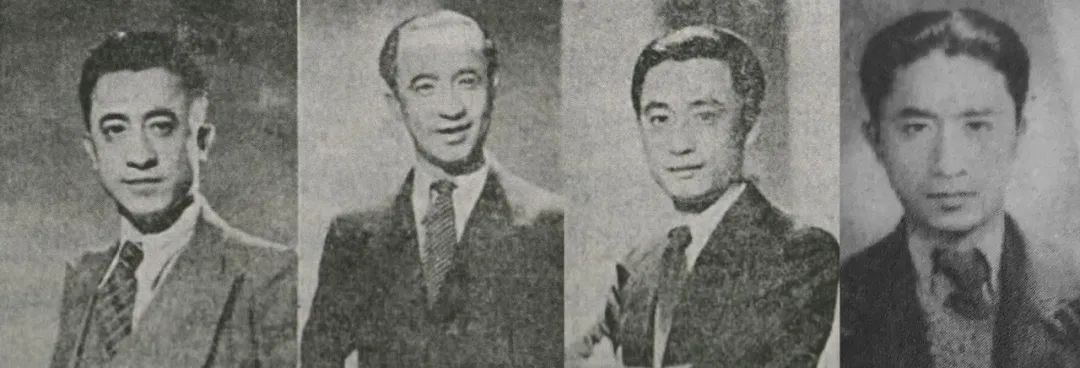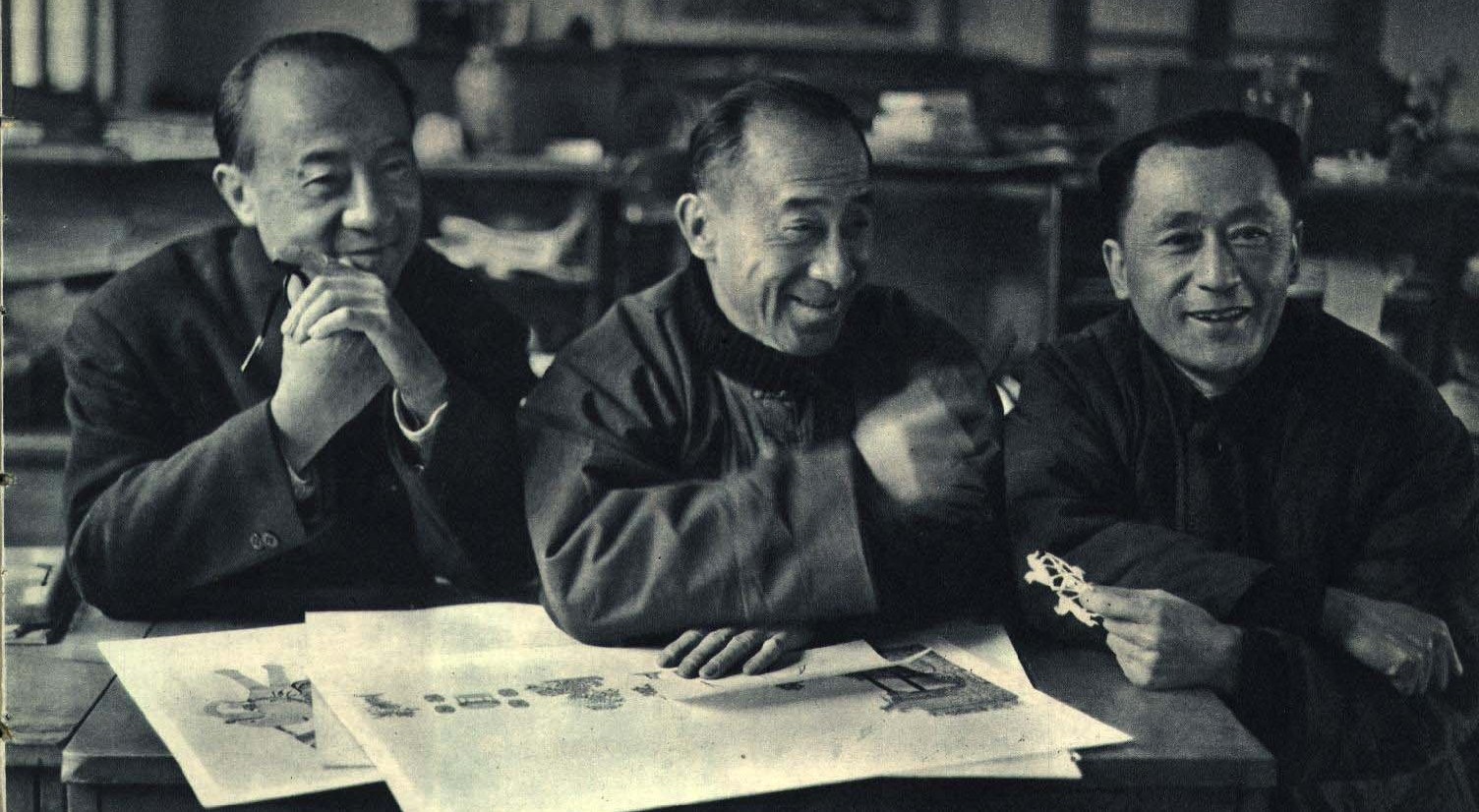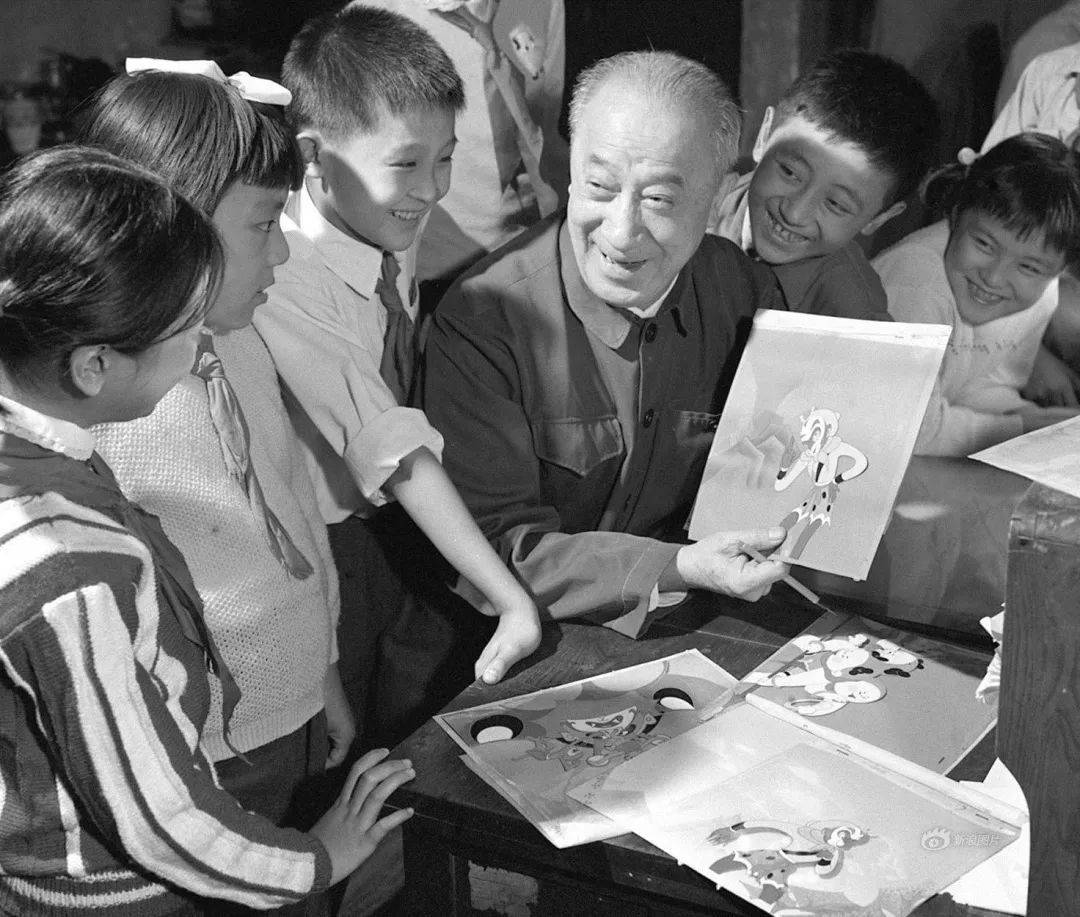The Wan Brothers (万氏兄弟)
Filed under: People, Animator, Cartoonist, Character Designer, Director, Screenwriter, Writer, 1920s, 1930s, 1940s, 1950s, 1960s, 1970s, 1980s, 1990s, China, Shanghai Animation Film Studio, Silent, Technicolor,

The Wan Brothers from the oldest to the youngest: Wan Laiming (leftmost), Wan Guchan (second left), Wan Chaochen (right), and Wan Dihuan (rightmost)
Full Name:Laiming (籁鸣); Guchan (古蟾); Chaochen(超尘); Dihuan (涤寰) Wan
Occupation / Title:Animator, Cartoonist, Character Designer, Director, Screenwriter, Writer
Date of birth:18/01/1900 (Laiming & Guchan), ?/10/1906 (Chaochen), ?/?/1907 (Dihuan)
Date of death:07/10/1997 (Laiming), 19/11/1995 (Guchan), ?/10/1992 (Chaochen), ?/?/1990 (Dihuan)
Birthplace:Nanjing, Jiangsu Province, China
Associated studios:
The three brothers who later joined Shanghai Animation Film Studio

Wan Laiming, director and screenwriter of Havoc in Heaven, introducing the celluloid to children
Biography
The Wan Brothers (万氏兄弟) are the group entitlements of a total of brothers—Wan Jiazong (万嘉综), Wan Jiaqi (万嘉淇), Wan Jiajie (万嘉结), and Wan Jiakun (万嘉坤)—who later took aliases as Wan Laiming, Wan Guchan, Wan Chaochen, and Wan Dihuan. They are the founders of Chinese animation and the earliest members of Shanghai Animation Film Studio.
Encouraged by their mother, who specialized in embroidery and papercutting, the brothers created their own papermen to mimic traditional shadow play as childhood entertainment, planting the seed of their later passion in animation.
After reaching adulthood, the four brothers joined the Art Department and Motion Picture Department of Shanghai Commercial Press (Sun 35). Wan Laiming was amazed by American cartoonist Max Fleischer’s work, such as Out of the Inkwell (1918), screened in Shanghai. He wrote a letter to the producer for technological consultancy, however, with no reply. Without access to foreign assistance, the Wan Brothers managed to decipher the theory of animation by themselves in 1920, catching the attention of Commercial Press, who entrusted them to create an animated advertisement Shuzhendong Chinese Typewriter (舒振东华文打字机) (1920) now lost to history (Ibid. 37).
Later, the brothers collaborated with Great Wall Film Company and Dazhonghua Baihe Film Company to make the first Chinese animation Uproar in the Studio (大闹画室) (1926), followed by additional animated shorts such as A Letter Sent Back (1927) and Paperman Makes Trouble (1930). They also helped create animated special effects embedded in real-action films such as Burning of the Red Lotus Temple (火烧红莲寺)(1928) and Scenes of City Life (都市风光)(1935).
During the Second Sino-Japanese War (1931–1945), the Wan Brothers actively participated in the promotion of war resistance against Imperial Japan by creating animations with explicit anti-Japanese messages. While at the same time, they created The Camel’s Dance (骆驼献舞) (1935), the first Chinese sound animated short, and Princess Iron Fan (铁扇公主) (1941), the first animated feature film in Asia (Ibid. 45-46).
After the Sino-Japanese War and the Civil War (1945-1949) ended, everyone except Wan Dihuan, the youngest brother, joined Shanghai Animation Film Studio and contributed greatly to the creation of some of the studio’s earliest works. Wan Laiming was most well-known to be the director and screenwriter of Havoc in Heaven (大闹天宫)(1961, 1964). His twin, Wan Guchan, invested in papercut stop-motions such as Pigsy Eats Watermelon (猪八戒吃西瓜) (1958) and The Fishing Child (1959). Wan Chaochen was interested in puppetry stop motion, making The Witty Goat (机智的山羊) (1956) and The Tale of the Carved Dragon (雕龙记) (1959).
References:
Lijun, Sun. “Founding of Shanghai Animation Film Studio.” The History of Chinese Animation I, 1st ed., Routledge, 2020, pp. 99–131, https://doi.org/10.4324/9780367854867-11.
